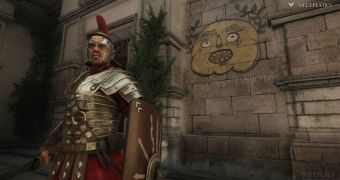At the very start of Ryse: Son of Rome, Emperor Nero, fat and clearly a coward, is racing through his crumbling palace looking for a safe place and my interest was piqued as I was ready to hear how the main character was involved in the burning of Rome, one of the most interesting episodes of Ancient history.
Then the hordes of barbarians came in and the game did nothing but go downhill from that point, when it came to actually paying attention to historical realism or trying to weave a decent tale out of the main myths of the Roman period.
I understand that it’s impossible for video games to actually recreate history because the past can often be boring, even during the periods that we now see as filled with events, wars or disasters.
But I certainly was not ready for the way Ryse veered quickly and decisively towards fantasy, basically using the Roman architecture and customs as nothing more than simple backdrops for a story built around revenge and a lot of violence.
What’s even more annoying is how the Crytek team managed to introduce some nice touches to the environments they created, including graffiti on some walls dealing with Nero weaknesses.
They needed to focus more on such details rather than deploying resources to a sequence that evokes the Normandy landings of World War II that is ill suited to the epoch or to how warfare worked at the time.
In my previous Gamer Diary about Ryse, I suggested that the story of Marius should have been shelved in order to give players a chance to play as a number of Roman legionnaires through the ages.
In addition to offering more gameplay variety, this would have also allowed Crytek to pay more attention to actual historical battles and the significance they had for the fate of the world.

 14 DAY TRIAL //
14 DAY TRIAL //